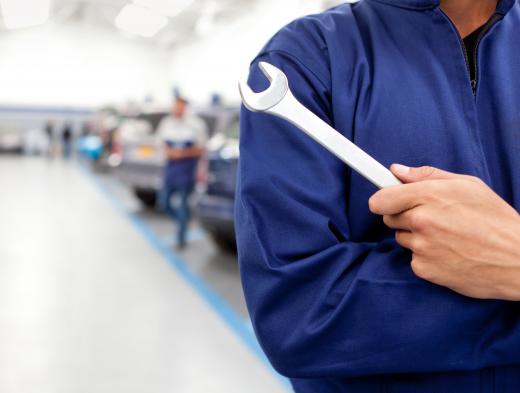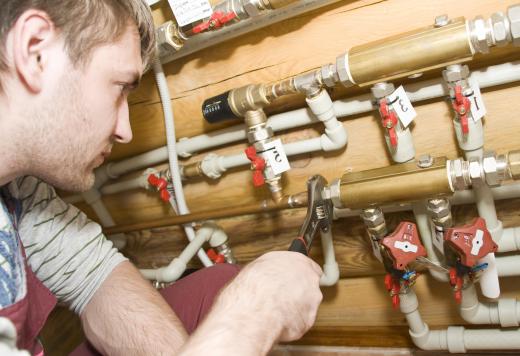A wrench is a tool used to apply torque to turn nuts, bolts, and other various fasteners. Standard wrenches consist of a long metal handle with a mechanism at the end for grasping the item being turned. A double wrench is similar, but has grasping mechanisms at both ends instead of just one. In the UK, this tool is commonly known as a "spanner" or "double spanner."
The double-sided wrench is available in many different sizes and styles to accommodate different types of fasteners. An open double wrench is among the most common varieties, and includes a U-shaped bracket at either end of the handle. This U-shaped bracket can be fitted around nuts or bolts to tighten or loosen them during installation. The end brackets on an open double wrench are typically two different sizes, which allows users to work on two different sizes of fastener with a single tool. This also means that the entire wrench set is half as large as it would be if it consisted of single-ended wrenches.

The double wrench is also available in an adjustable model. Users can turn a small adjusting wheel to widen or narrow the bracket at the ends of the wrench. These units may be smooth for use with standard fasteners, or serrated for use with pipes and plumbing work.
A closed double wrench has circular brackets at either end, which can wrap all the way around a fastener. The brackets are typically two different sizes to accommodate various types of fasteners. Some units may have a closed bracket at one end and an open bracket at the other end. In this type of configuration, the two brackets are generally the same size.

Some bicycle repair kits may include a double-ended cone wrench. This tool is much smaller and thinner than a standard wrench, which allows it to fit into small areas within the bicycle's operating components. These wrenches usually have an open bracket at either end, though some closed models are also available.
When choosing a double wrench, it's important to find one that's sized correctly for the project you're working on. A wrench that's too large will likely damage the nut or bolt as you try to turn it. A unit that's too small won't fit around the fastener at all, and will be ineffective. While adjustable wrenches offer more flexibility in terms of size, they are considered less strong and stable than standard wrenches, and will not typically supply the same level of torque or force.
